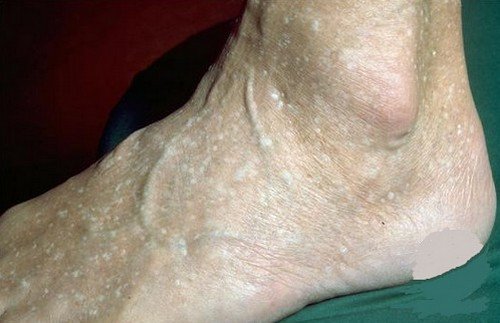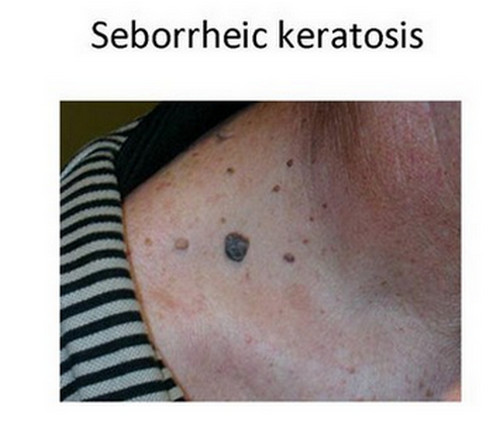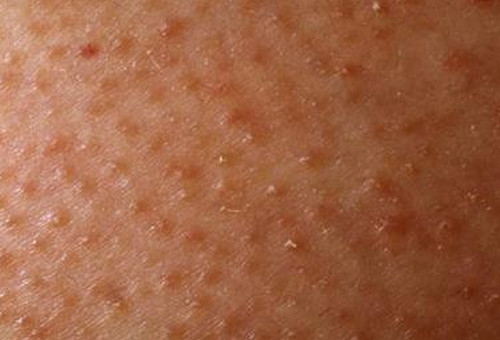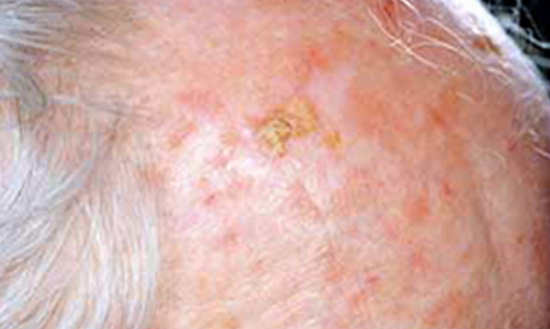Keratosis
Last reviewed by Dr. Raj MD on January 12th, 2022.
What is keratosis?
It is an overgrowth of keratin on the skin. A keratin is a type of protein found on the skin and hair.
However, too much keratin can be potentially harmful to the body leading to a condition known as keratosis. There are different types of keratosis. The most common types are the following:
Keratosis pilaris
It is characterized by small, acne-like goose bumps. In layman’s term, it is called chicken skin. It is an indication that your body lacks vitamin A.
Actinic keratosis
This type of keratosis is caused by the sun. Its clinical manifestations include thick, dry, rough, and crusty scales. It looks like a scab but does not heal and fall off. If not treated right away could lead to a benign type of skin cancer like squamous cell carcinoma and basal cell carcinoma. (3)
Seborrheic keratosis
It looks like warts but is not cause by virus. Luckily, it is a benign skin condition and will not require any treatment. Many people prefer to remove it for cosmetic reasons. (1, 2)
Stucco keratosis
What is stucco keratosis? It is a form of keratotic papule commonly found on the distal lower extremities. Stucco keratosis appear in multiple lesions and are more common in men than women. On a lighter note, the lesions are asymptomatic and the patient didn’t even realize that there are lesions.
It is called stucco keratosis because the lesions appear as “stuck on.” Stucco keratosis is a result of thickening of the epidermis and surface friction. This condition commonly affects the elderly and is more common in men.
It could affect all races and begin to appear around 45 years old. The lesions are numerous and found mostly on the lower legs. However, it can also appear in the forearms and dorsal hands. The size of the lesions are about 1 to 10 mm in diameter and appears to be white to greyish in color.
The lesions are macular type with a stuck on appearance. The surface of the skin is dry and rough. (2, 10)
Pictures

Photo 1: A stucco keratosis on the foot of an elderly patient.
Picture Source: www.dermis.net
 Image 2: Seborrheic keratosis or melanoma in an elderly patient.
Image 2: Seborrheic keratosis or melanoma in an elderly patient.
Photo Source: img.medscape.com

Image 3: An image of keratosis pilaris or also known as chicken skin.
Picture Source: img.medscapestatic.com
 Picture : (Actinic keratosis in an elderly patient.)
Picture : (Actinic keratosis in an elderly patient.)
Who are at risk for keratsis?
Seborrheic keratosis is prevalent in the older population. It develops in middle-aged people and the risk increases as a person grows older.
This condition also runs in the family. If you have a family history of seborrheic keratosis, then there is a possibility for you to have it. Frequent exposure to extreme heat of the sun also increases the possibility of seborrheic keratosis.
For keratosis pilaris, the usual patients include children and teenagers. It affects both men and women, but the prevalence is slightly higher in women. On the other hand, actinic keratosis commonly affects people with fair skin as well as people who stays under the heat of the sun for a long period of time.
People whose immune system is compromised are prone to actinic keratosis, especially those undergoing chemotherapy, organ transplant, and AIDS. (5, 6, 7)
For stucco keratosis, men aged 40 years old and above are at risk. In fact, the prevalence is four times higher in men that in women. Reports also showed that most of the patients are Caucasians. Prolonged exposure to extreme heat of the sun can increase the likelihood of having stucco keratosis. (2, 3, 4)
Keratosis Treatment
The treatment for keratosis varies depending on the type and severity. How to get rid of stucco keratosis?
What about other types of keratosis? What you can do to get rid of them and prevent them from reoccurring?
Keratosis removal
Many people want to have their keratosis removed because it is unsightly and can greatly affect their confidence. There are different ways to get rid of keratosis such as using a liquid nitrogen or burn it off using a laser or electricity.
Increasing the body’s nutrient level
Keratosis is associated with indigestion, ingesting toxic food, and malnutrition. Most of the time, the body is deficient of essential nutrients such as vitamins A, D, zinc, and magnesium. It is a must to take multivitamins and supply your diet with essential nutrients including fish oil. (4, 5, 6)
When you should contact your health care provider?
As mentioned above, keratosis is not really a cause for alarm. It will not put your health in danger in any way. What it can do though is it could affect your self-esteem and self-confidence. The lesion is very unsightly and it is the reason why many people want to have it removed.
However, if you notice any unusual changes, then you should contact your doctor right away. The doctor will thoroughly assess your condition and will come up with the best possible remedy. It is important to correctly diagnose your condition so that you will have a clear direction as to what step you should do to improve your condition. (8, 9, 10)
A skin doctor or dermatologist will teach you ways on how you are going to spot malicious lesions and how to monitor your condition effectively. If you have keratosis and you want to have it removed, then you should talk to your doctor as to what method works best for your condition.
Some methods are affordable while others are expensive. It all depends on the severity of lesion. Again, it is important to see your skin doctor to thoroughly assess your condition and determine what treatment approach works best for your condition.
Aside from the lesion removal technique, you also need to improve your overall health. Eat a well-balanced diet, avoid stress, and live a healthy life. Drink plenty of water and eat foods that are good for the skin such as fruits and vegetables. (9, 10)
References:
- https://en.wikipedia.org
- emedicine.medscape.com
- www.mdedge.com
- www.cleaverderm.com
- www.pcds.org.uk
- health-benefits-of.net
- www.wederm.com
- www.medhelp.org
- www.essentialdayspa.com
- Dermatology By Otto Braun-Falco, Gerd Plewig, Helmut Heinrich Wolff, Walter Burgdorf